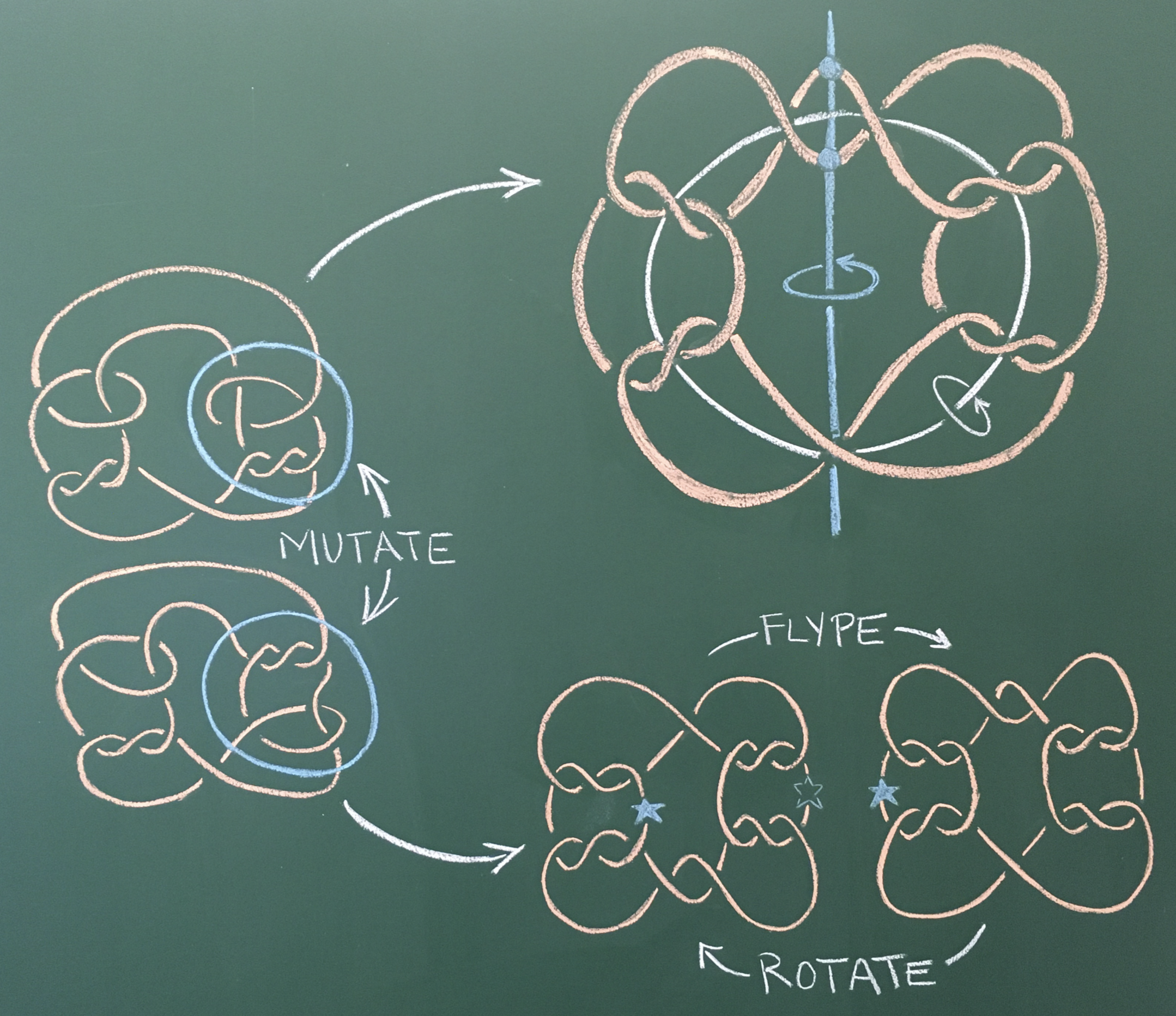

This is a math class about knots. While these are objects that arise relatively naturally in a variety of day-to-day and scientific settings, our challenge will be to carefully sort out how to describe, and ultimately study, knots using mathematical tools. The image on the right is taken from Mathematical Research Postcards (Volume 1 Number 1).
Here are some further remarks about this class:
• In a mathematical context, the study of knots falls into a broader area of research called topology, which is a branch of geometry (in a broad sense). However, topology (Math 426, for instance) is not a prerequisite for this course and as such we won't really take this point of view; our course will be more combinatorial in nature, building from the ground up.
• The course does, on the other hand, have prerequisites in the form of linear algebra (Math 221/223 or similar) and mathematical proof (Math 220 or similar). We will rely on both.
• This course will take the point of view that knots are naturally occurring objects–worthy of study in their own right. While I will draw on examples found "in nature" from time to time, this won't be the main emphasis of the course. Instead, this course is meant to provide a window to pure mathematics research, and hopefully provide a partial answer to the question "what do mathematicians do?"
• The bulk of your grade will come from assigned homework (more on this below). Solution sets for these assignments will not be provided. The reason for this is, in part, that there are multiple correct solutions to the majority of the problems set as homework. To succeed in this course it is crucial that you understand your solution to a given problem. And to that end, I am happy to discuss your solutions with you during office hours.
Assignment submission and grading will make use of Canvas. Here are some essential guidelines for assignment submission:
1. Your solutions to assignments must be submitted using canvas. In particular, do not email assignments.
2. Your solutions must be submitted as a single file.
3. The only accepted file type is PDF.
4. Files should be named according to the following convention:
YourName_YourStudentNumber_AssignmentNumber.PDF
There are free online tools available that will allow you to complete (2) and (3). Due to the volume of data being managed, it is really important that these 4 points be met so that we can grade and keep track of your work effectively. As a result, if one (or more) of these four points are not met, your assignment will not be accepted/graded.
To view the full content of this course, including lecture summaries and assignments, turn off reader-view.